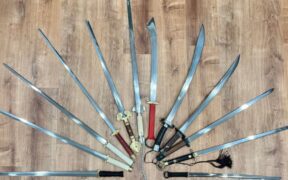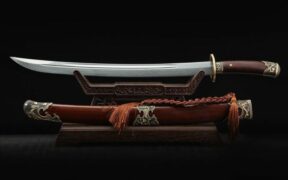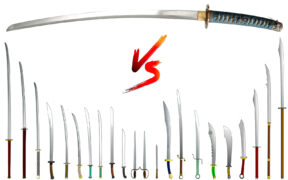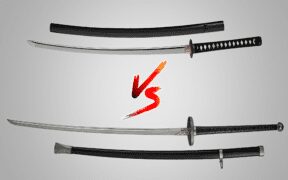Parts of a Chinese Sword: The Jian and Dao Anatomy
NO AI USED This Article has been written and edited by our team with no help of the AI
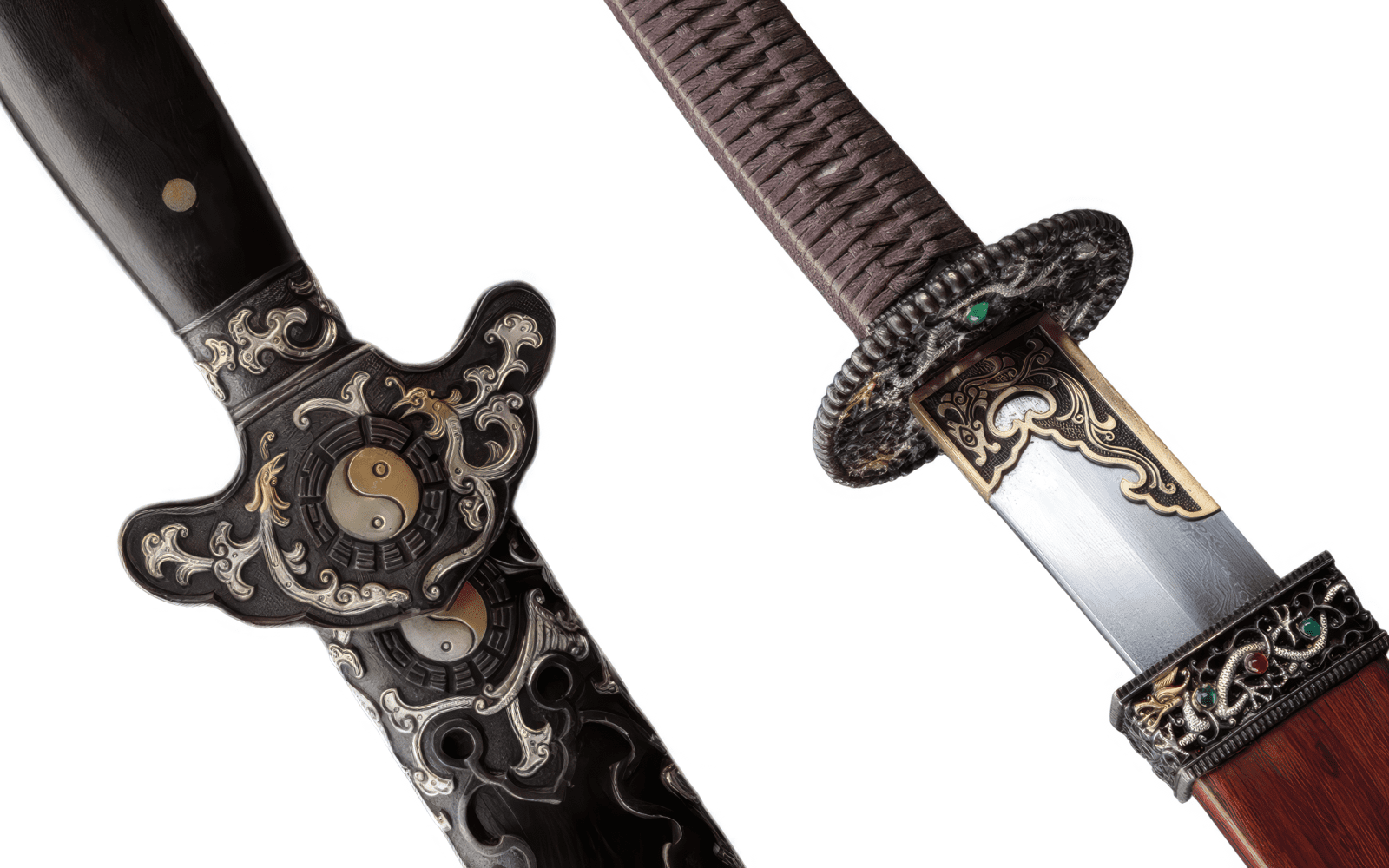
Two renowned Chinese swords, the jian and dao, have distinct designs that reveal much of their role in history. Known respectively as the “Sword of Scholars” and the “Sword of Warriors,” these blades not only differ in structure and spirit, but also represent different philosophies in combat.
This article explores both the anatomy of the jian and dao, their unique features, and the roles each part plays.
Chinese Swords – Jian & Dao
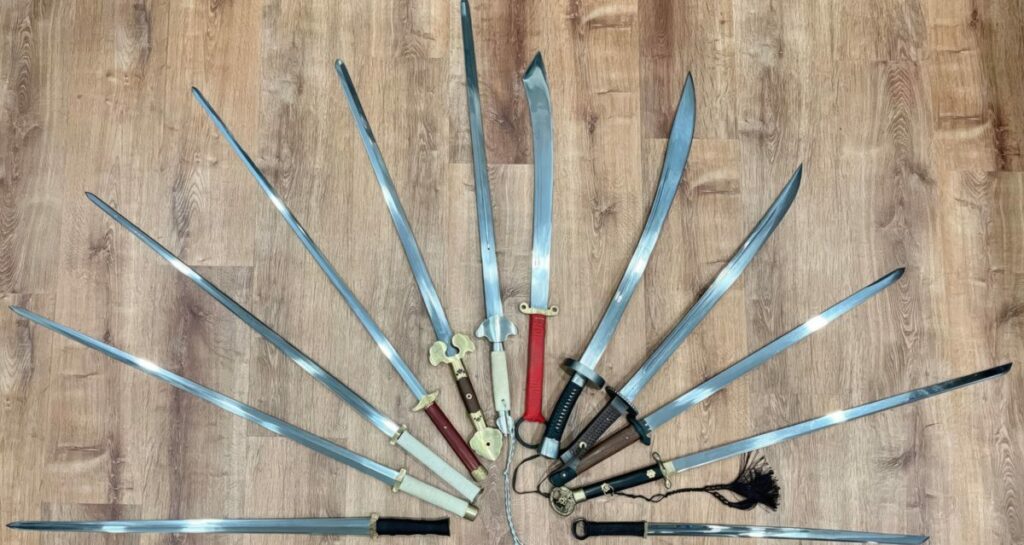
Chinese swords can be broadly divided into two main categories: the jian and dao.
Jian have straight, double-edged blades, and are among the first swords in history, dating back to the Bronze Age. Although varied in shape through the centuries, they generally feature the same components.
Meanwhile, dao swords are single-edged blades, typically curved but occasionally straight. These emerged during the Chinese Han Dynasty and gradually replaced the double-edged jian on the battlefield.
“In the realm of Chinese martial arts, the Dao is often heralded as the General of Swords, a robust weapon of warfare wielded with commanding force. In contrast, the Jian, with its refined elegance, is revered as the Gentleman of Swords, designed for the discerning martial artists”, says Scott M. Rodell, a master instructor in Chinese sword martial arts.
Jian Sword Parts
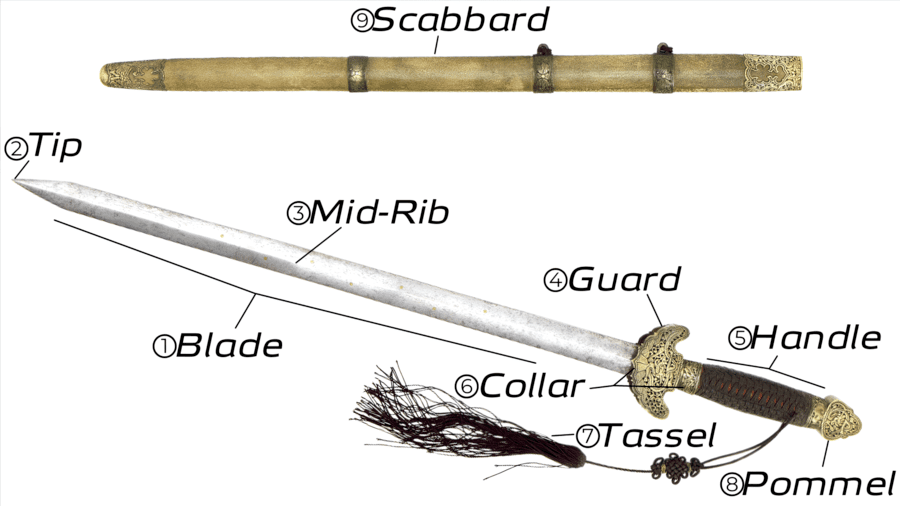
- Blade (剑体, jiàn tǐ) – Straight double-edged steel around 27 inches (70 cm) long, can be 2-, 4-, or 8-sided for different aesthetic and structural characteristics.
- Blade Tip (剑尖, jiàn jiān) – The tip of the blade that has a gradual taper that concludes in a precise and exceptionally sharp tip, optimized for piercing.
- Mid-Rib/Fuller (剑脊, jiàn jǐ) – A central spine or rib along the blade, giving the blade strength, flexibility, and reducing the sword’s overall weight.
- Guard (护手/剑格, hù shǒu / jiàn gé – Protective metal handguard in various shapes to protect the wielder’s hand.
- Handle (剑把, jiàn bǎ) – Traditionally one-handed and made out of wood, wrapped in cotton, silk, or leather cord.
- Blade & Handle Collar (吞口, tūn kǒu) – The collar that secures the handle and blade just above the guard, ensuring stability and smooth entry into the scabbard.
- Tassel (剑缨/剑穗, jiàn yīng / jiàn suì) – Traditionally attached to the handle not only for aesthetics, but also grip and balance control, training aid, and more.
- Pommel (剑镡, jiàn tán) – The metal piece at the end of the handle to secure it and balance the sword’s weight, often shaped to match the handguard.
- Scabbard (剑鞘, jiàn qiào) – The sword’s sheath, generally straight, and made out of wood with metal fittings.
Dao Sword Parts
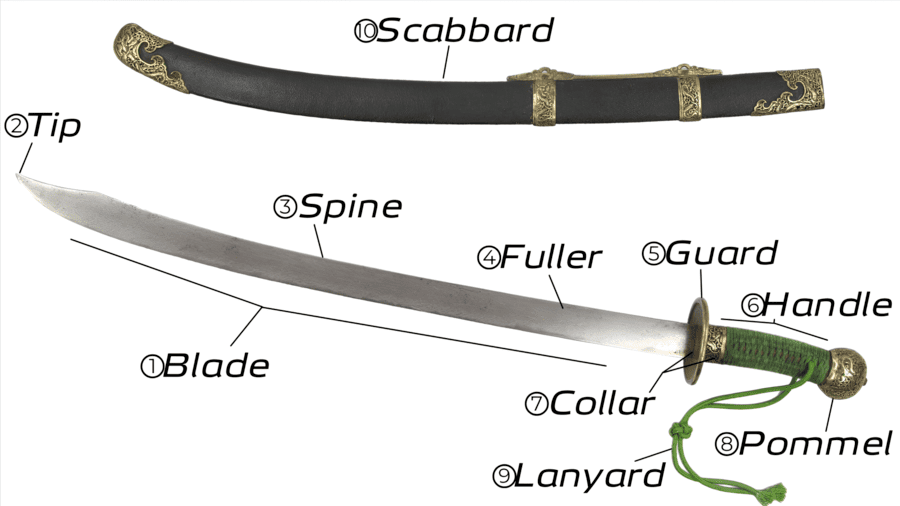
- Blade (刀体, dāo tǐ) – The main body, typically straight or curved single-edged steel around 27 inches (70 cm) long.
- Blade Tip (锋/刀尖, fēng / dāo jiān) – Typically curved with a single sharpened edge. Occasionally, a false edge may be present to enhance piercing capability.
- Spine (刀背, dāo bèi) – The thick, unsharpened edge that provides strength and rigidity. It can also be used for blocking and deflecting enemy attacks.
- Fuller (血槽, xuè cáo) – A groove along the blade to reduce weight while improving balance and flexibility without compromising its strength.
- Guard (护手, hù shǒu) – The protective metal handguard, usually rounded with varying designs, and used to block attacks and protects one’s hand.
- Handle (刀把, dāo bǎ) – Designed for a one-handed grip, wrapped in a pattern using cotton, leather, or silk cords.
- Blade & Handle Collar (吞口, tūn kǒu) – The metal collar that secures the blade and handle right above the guard and ensuring a smooth transition when sheathing the blade.
- Pommel (刀把顶饰, dāo bǎ dǐng shì) – Typically a rounded piece of metal at the end of the handle to secure it and provide balance. Its design often matches the guard.
- Lanyard (腰刀系子, yāo dāo xì zi) – A cord attached to the handle that can be tied around the wrist to prevent the sword from slipping.
- Scabbard (刀鞘, dāo qiào) – A curved wooden sheath with metal fittings at the tip and opening. There are also two suspension points with cords for carrying.
